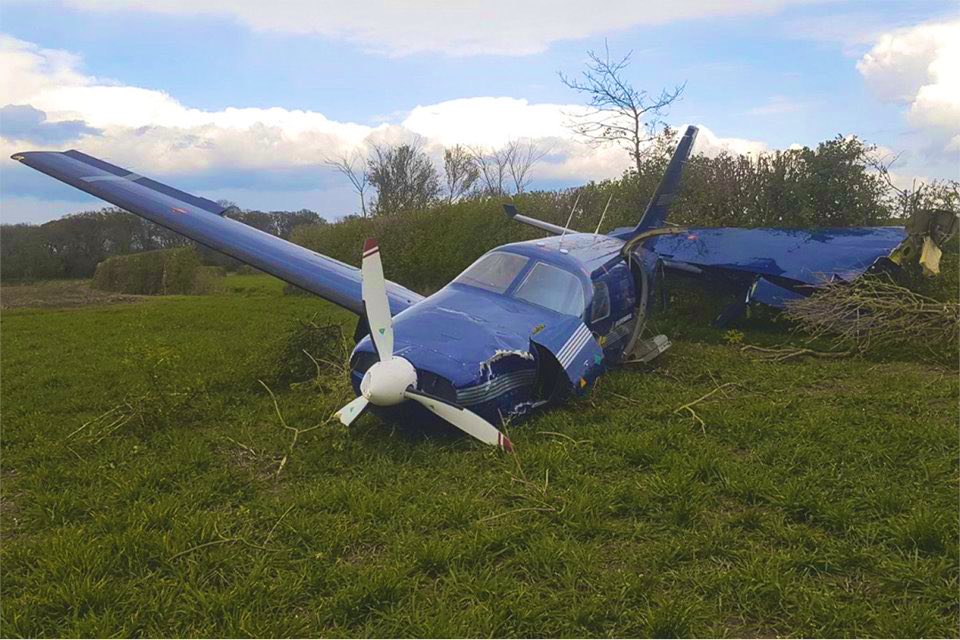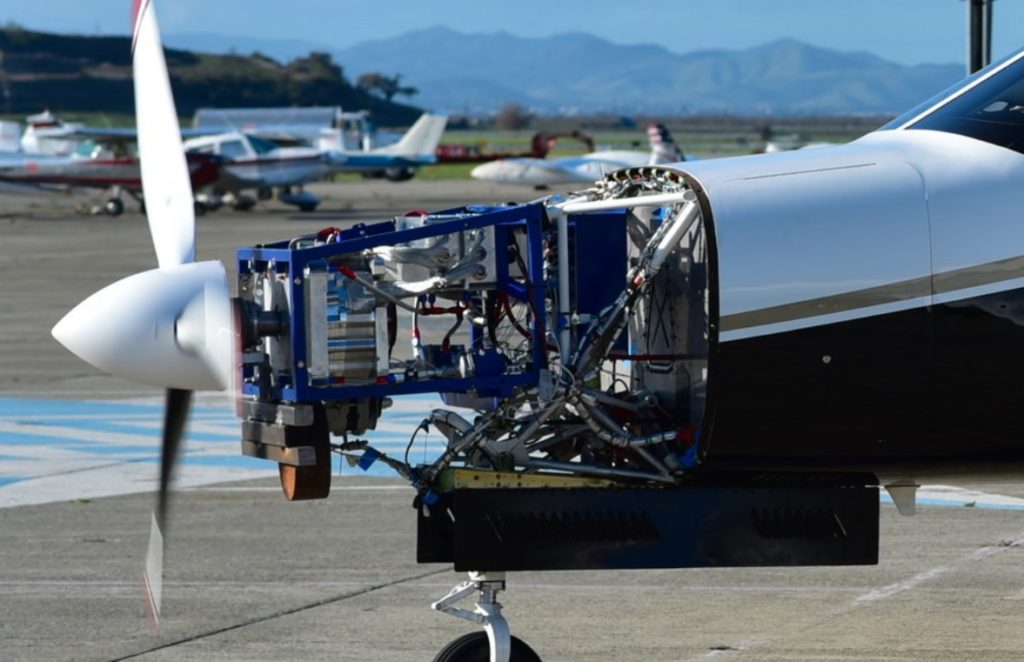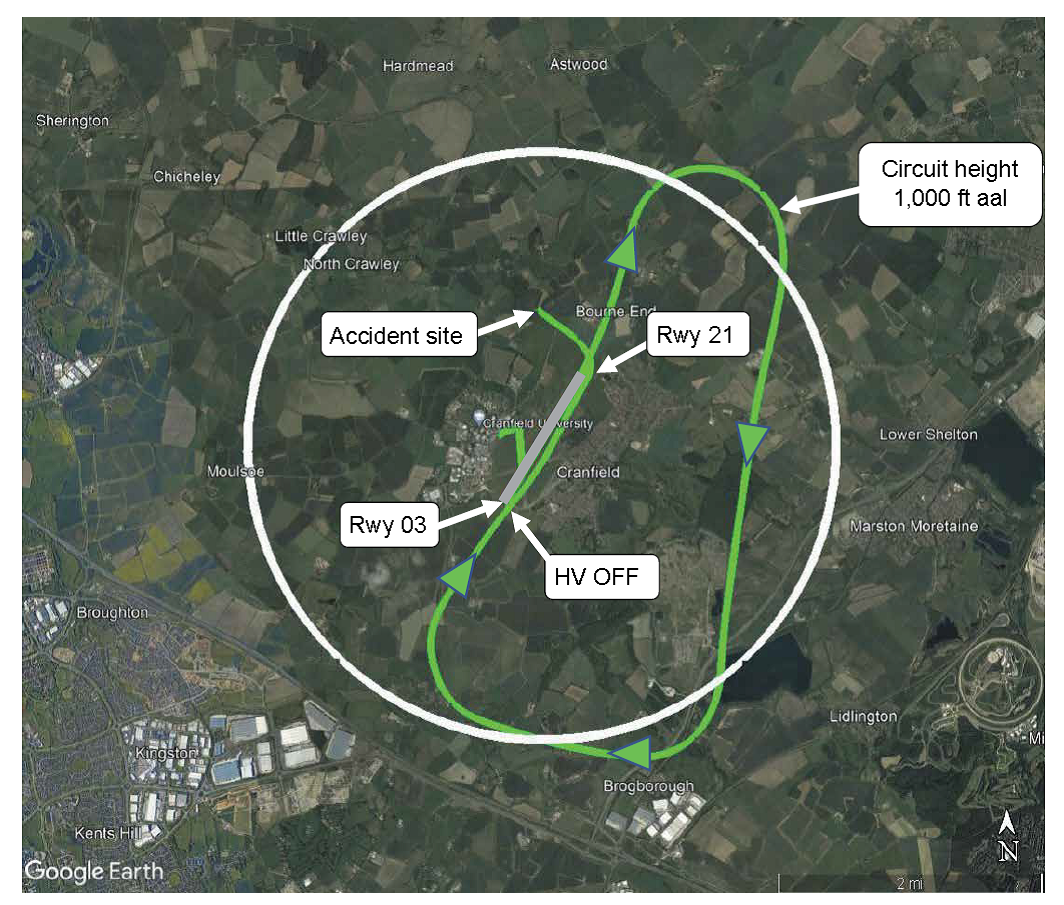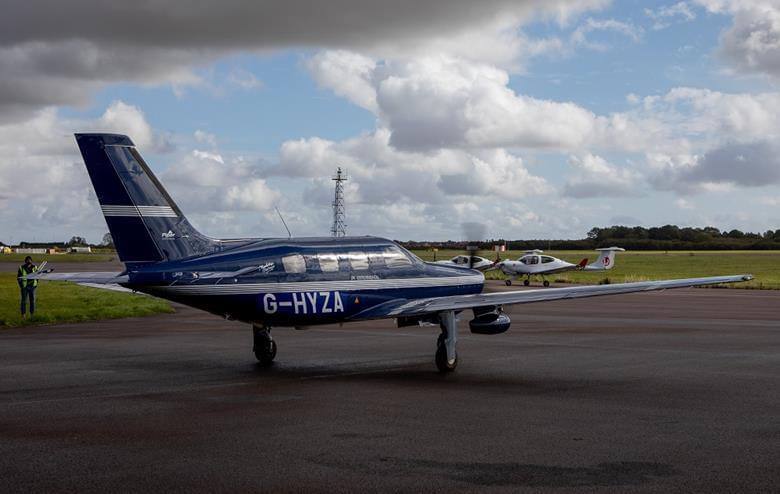


If you observe the website of ZeroAvia , it's Growth Forecast is Phenomenal — starting with a "9–19 seats , 300 NM range" commercial offering in 2024 to the "200+ seats 5,000 NM range" aircraft installed with it's Hydrogen-Electric (hybrid) powertrains by 2040 , aspiration of the company is a challenge against the time.
Though, it may not be an impossible task , one wonders the manpower size of the company , that will be put into test to achieve this heculean task of powertrain technology maturing , safety risk assessments , certification , adaptation , and finally the commercial offering !
Now , AAIB-UK says , "Commercial pressure would be actively managed to ensure that it does not compromise safety" for experimental developments in it's Safety actions — AAIB-27260 / G-HYZA published as an Accident Report into a 2021 crash of the ZeroAvia electric aircraft, that was carrying out flight tests for maturing the hydrogen fuel cell technology.

ZeroAvia Power train - innovation for emissionless Flights !
We welcome the conclusion of the AAIB’s investigation into the causes of the off-airport landing that occurred last year (April 2021) at Cranfield Airport as part of our test flight programme under Project HyFlyer I.
While the report does not make specific recommendations for ZeroAvia within its conclusions, many of the issues identified in the report were similarly noted in our internal investigation and have subsequently been addressed robustly.
Over a year on, ZeroAvia has grown to over 150 employees, and the recommendations made in this report have shaped this growth.
We have embedded key learnings into both our organisational culture and structure, as well as our future technical designs. This includes the establishment of a Safety and Security Review Board, adding to our team with extensively qualified members in several critical positions, including within our design, airworthiness and flight test teams, and establishing a safety management system based on a ‘just’ aviation culture, including occurrence reporting, investigation and corrective actions functions.
On the Day of the accident , the Modified Piper PA-46-350P aircraft was prepared for the experimental test flight 86, under E Conditions , after the test flight 85.
The plan for this flight was for the High Voltage (HV) battery to be switched off at the end of the downwind leg then, if able, to fly three or more circuits at 1,000 ft aal using the Hydrogen Fuel Cell (HFC) only to provide electrical power.

While taking the circuit pattern flying , power to the electrical motors was lost due to the experimentation with power source switching. A forced landing was carried out close to Cranfield airfield (EGTC) during which the aircraft was severely damaged.
The loss of power occurred during an interruption of the power supply when , as part of the test procedure, the battery was selected off with the intention of leaving the electrical motors solely powered by the hydrogen fuel cell.
During this interruption the windmilling propeller generated a voltage high enough to operate the inverter protection system , which locked out the power to the motors. The pilot and observer were unable to reset the system and restore electrical power.
G-HYZA was a modified Piper PA-46-350P, Malibu Mirage, built in 1997. The aircraft was previously registered as N866LP and was modified with a HV battery supplying power to two electric motors.

After the modification, it was flown in the UK on a FAA experimental permit . Once the HV battery trials were complete , the aircraft was re-registered as G-HYZA and fitted with a single HFC , in addition to the HV battery , and flown under CAA Civil Aviation Publication (CAP)1220 , E Conditions.
Post Investigation , UK-AAIB published several safety recommendations and safety actions through the Accident Report ! Many of these safety Recommendations and Actions indicated further Guidance requirement for the experimental Operation of the Aircraft Under E Conditions , along with technology maturing and commercial pressure management was advised.
.jpg)
► Safety Recommendation 2022–008 : It is recommended that the Civil Aviation Authority develops guidance in CAP1220, Operation of Aircraft Under E Conditions, regarding the use of existing guidance on the design and positioning of controls and displays used in the operation of the aircraft.
► Safety Recommendation 2022–009 : It is recommended that the Civil Aviation Authority clarify the scope of projects considered suitable to be carried out under CAP1220, Operation of Aircraft Under E Conditions, and any additional provisions that might be required for more complex projects.
► Safety Recommendation 2022–010 : It is recommended that the Civil Aviation Authority require an independent review of the Dossier for aircraft operating under the provisions of CAP1220, Operation of Aircraft Under E Conditions, to ensure the project meets the intent of the guidance and can be safely managed by a competent person.
► Safety Recommendation 2022–011 : It is recommended that the Civil Aviation Authority requires that the individual nominated as a competent person under CAP1220, Operation of Aircraft Under E Conditions, has the knowledge, skills, experience, and capacity to manage and oversee the experimental test programme registered on the Declaration.
► Safety Recommendation 2022–012 : It is recommended that the Civil Aviation Authority enhance the guidance for the competent person and principal test pilot in the organisation, management, and conduct of the flight of an experimental aircraft project operating under CAP1220, Operation of Aircraft Under E Conditions.
► The design for the operator’s future project would incorporate the learning in terms of handling back-EMF [voltage] due to windmilling.
► Future prototype testing would be limited to non-critical redundant situations until the powerplant design matures.
► The design and flight test of future programmes would follow CAA/EASA part 21J and aviation industry best practice.
► A safety management system based on a ‘just’ aviation culture would be established and include occurrence reporting, investigation, and corrective actions functions.
► Commercial pressure would be actively managed to ensure that it does not compromise safety.
Hybrid #hydrogen -electric powertrain - United Kingdom based ZeroAvia has replaced the left engine (Honeywell TPE331 turboprop) of this 1984 built Dornier 228-202K aircraft (G-HFZA) with it's 600kW ZA600 hybrid hydrogen-electric/battery system for initial ground tests .#aircraft pic.twitter.com/Guq5ha6xa1
— FL360aero (@fl360aero) December 24, 2021
ZeroAvia's replacement of the Honeywell TPE331 turboprop with it's 600kW ZA600 hybrid hydrogen-electric/battery system for initial ground tests.
Credits : UK-AAIB report / 27260 / G-HYZA .
You may like to read...
